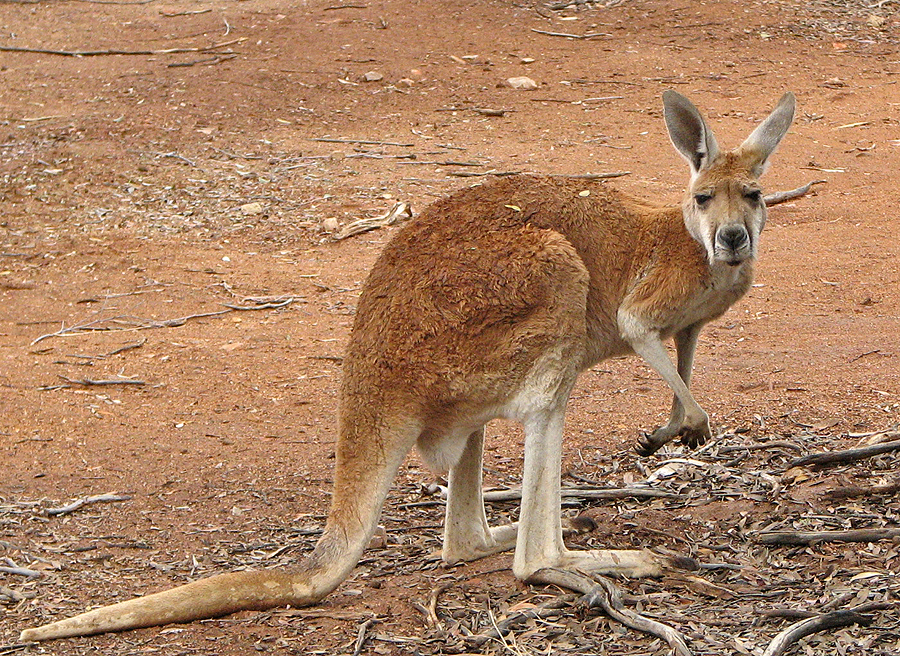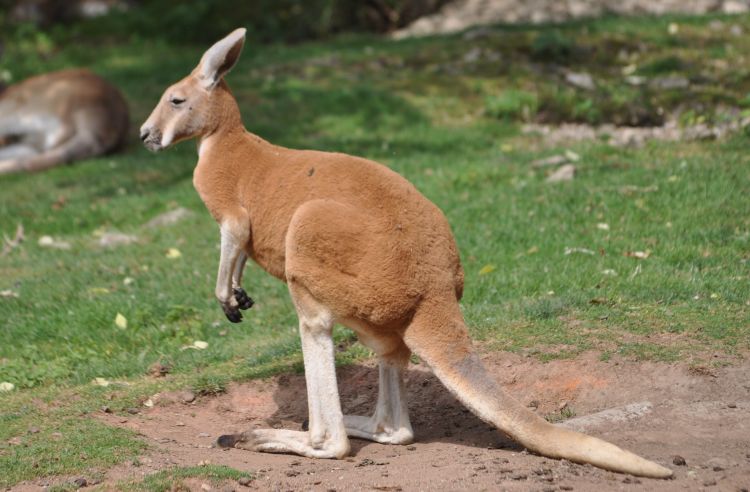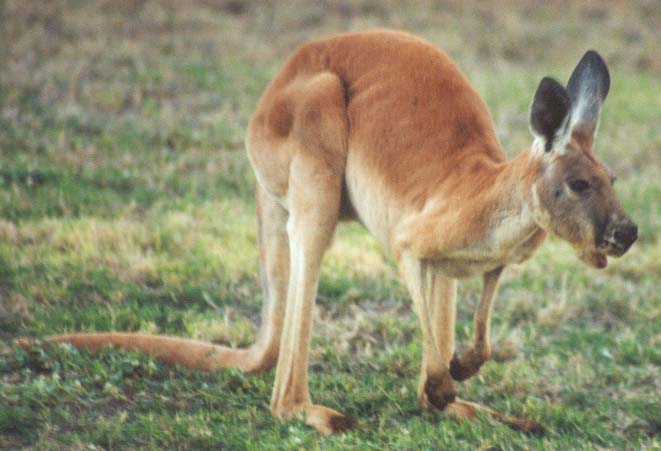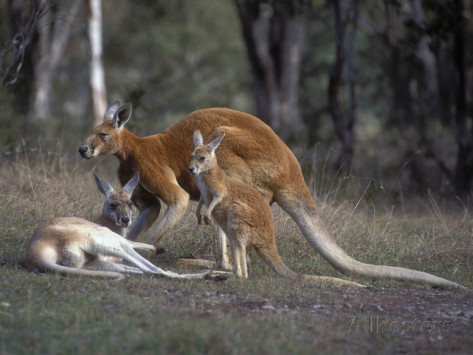



Crveni kengur
Crveni kenguri imaju kratko, crveno-braon krzno koje postepeno prelazi u svetliju boju na udovima i na stomaku. Imaju velike, zašiljene ušne školjke i crnu njušku, dugačke mišićave noge i rep. Noge crvenog kengura funkcionišu kao gumena opruga — mužjak, u jednom skoku, može da skoči u punoj brzini više od 9 metara. Mužjaci imaju telo dugačko od 130 do 160 centimetara, dok su ženke sitnije i dužina tela iznosi od 85 do 105 centimetara. Rep je debeo i dugačak, dovoljan da izdrži telesnu masu životinje, i služi za održavanje ravnoteže prilikom skokova. Zajedno sa dve noge služi kao tronožac prilikom odmaranja
Oči su im veoma sjajne, a nos je crvene boje. Noge su im veoma razvijene, te jaguari spadaju medju najbrže životinje u svetu. Koža jaguara, koja je veoma cenjena u modnoj industriji je kombinacija žute, narandžaste, bele, braon i crne boje. Postoje i potpuno crni jaguari, poznati kao panteri, koji nisu mnogobrojni. Zubi su kod ovih životinja izuzetno razvijeni. Žive do 22 godine.
Ovi kenguri se hrane travom i ostalom vegetacijom. Mogu izdržati dugo bez vode, sve dok imaju pristup zelenim biljkama jer imaju sposobnost da izvuku vlagu iz njih.
vörös óriáskenguru
A vörös óriáskenguru (Macropus rufus) az emlősök (Mammalia) osztályának az erszényesek (Marsupialia) alosztályágába, ezen belül a diprotodontia rendjébe és a kengurufélék (Macropodidae) családjába tartozó faj.
A ma élő kengurufajok közül az egyik legszélesebb körben elterjedt, legnagyobb elterjedési területű faj. Ausztrália belső, nagy kiterjedésű, ám vízben általában igen szegény területei, sivatagjai és félsivatagjai tartoznak a faj elterjedési területéhez. Egyedül a Vízválasztótól keletre eső területeken, Ausztrália északi partvidékén, illetve a kontinens délkeleti és délnyugati csücskében nem honos. Ez a leggyakoribb kengurufaj, évente 3 millió példányt ölnek meg.
A vörös óriáskenguru a ma élő erszényesek legnagyobb testű képviselője. Testhossza az orrtól a farok tövéig 85-105 centiméter nőstényeknél és 130-160 centiméter hímeknél, a farokhossza pedig 65-85 centiméter nőstényeknél és 100-120 centiméter hímeknél. E nagy méretbeli eltérések abból adódnak, hogy a hímek lényegesen nagyobbak a nőstényeknél. A nőstények legfeljebb 40 kilogrammosak, míg a hímek testtömege a 90 kilogrammot is elérheti.
Red kangaroo
The red kangaroo (Macropus rufus) is the largest of all kangaroos, the largest terrestrial mammal native to Australia, and the largest extant marsupial. It is found across mainland Australia, avoiding only the more fertile areas in the south, the east coast, and the northern rainforests. This species is a very large kangaroo with long, pointed ears and a squared-off muzzle. Males have short, red-brown fur, fading to pale buff below and on the limbs. Females are smaller than males and are blue-grey with a brown tinge, pale gray below, although arid zone females are colored more like males. It has two forelimbs with small claws, two muscular hind-limbs, which are used for jumping, and a strong tail which is often used to create a tripod when standing upright. The red kangaroo's legs work much like a rubber band, with the Achilles tendon stretching as the animal comes down, then releasing its energy to propel the animal up and forward, enabling the characteristic bouncing locomotion.
Riesenkänguru
Kängurus sind Pflanzenfresser. Gräser, Kräuter und Blätter sind ihre Leibspeise. Wenn es wenig regnet, kauen sie auch saftige Wurzeln gegen den Durst. Bürstenschwanz-Kängurus fressen in erster Linie Pilze, die sie im Boden suchen. Sie sind auf diese Nahrung spezialisiert und besitzen in ihrem Darm spezielle Bakterien, um die Pilze verdauen zu können. Pflanzen, Knollen und Würmer naschen sie nur so nebenbei.

